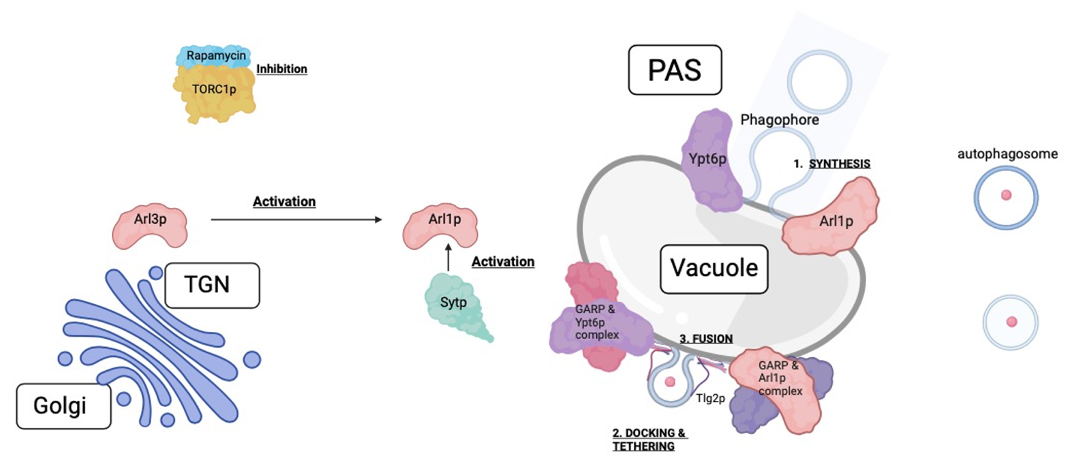Autophagy in Saccharomyces cerevisiae: A Study of Arl1p's Role in Heat and Starvation-Induced Cell Stress
Abstract
ADP-ribosylation factor-like protein (Arl1p) is a component of autophagy pathways within Saccharomyces cerevisiae (S. cerevisiae), a model organism used in studying human autophagy pathways and related diseases. In the non-specialized macroautophagy and specialized Cytoplasm-to-vacuole (Cvt) trafficking pathways, Arl1p facilitates three main processes: synthesis of acidic phagophores facilitation of the docking and tethering of Atg9p mediated autophagosomes, and fusion of autophagosomes with the vacuole. The current understanding of autophagy emphasizes the importance of cellular recycling for cellular maintenance during growth. We used fluorescence microscopy to visualize acridine orange (AO) stained acidic compartments and DAPI stained nuclei, and analyzed AO/DAPI quantity in cells incubated in conditions of both nitrogen starvation and non-permissive temperatures. We found significant increases in autophagosomes within the cytoplasm of arl1Δ mutants after incubation in nitrogen starvation conditions, thus deter mining that arl1Δ mutants are unable to fuse autophagosome content. We conducted western blots by antibody tagging aminopeptidase 1 (Ape1) to determine Arl1p’s role in the Cvt pathway. We found starvation conditions resulted in significantly more Ape1 translocation, and no significant difference between arl1Δ mutant and wildtype cells. Thus, Arl1p maintains a supporting role in autophagy.
Downloads
Published
Issue
Section
License
Copyright (c) 2024 Amendri De Mel, Aashwan Dhaliwal, Malena Heinrichs, Emilie Kaye

This work is licensed under a Creative Commons Attribution-NonCommercial 4.0 International License.



